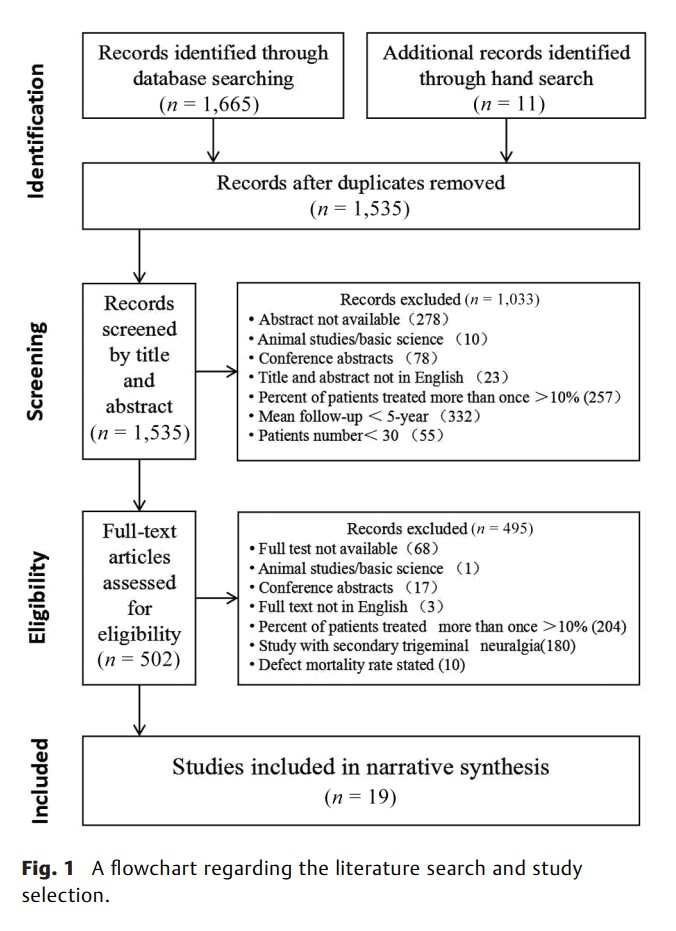
Highlighted article from
Journal of Neurological Surgery Part A:
Central European Neurosurgery
Review Article
A Comparative Review of the Outcome Following MVD and PBC in Patients with Trigeminal Neuralgia
Yi Zhou, Ning-Ning Dou, Xue-Lai Liu, Hui Wang, Jun Zhong
Background This study aims to systematically review the treatment outcomes of percutaneous balloon compression (PBC) and microvascular decompression (MVD) in patients with trigeminal neuralgia.
Methods A systematic review in accordance with the Preferred Reporting Items for Systematic Reviews and Meta-analyses (PRISMA) guideline was performed using PubMed, Embase, and Cochrane Central Registry of Controlled Trials databases. Only those articles with more than 5 years' follow-up length were included in this investigation. To uniformly assess the postoperative outcome, we defined pain relief as totally pain free, while the postoperative hospitalization and last follow-up period were defined as early and long term, respectively. The facial numbness was quantified with Barrow Neurological Institute Pain Intensity Score (BNI).
Results After database searching and screening, 7,797 cases were finally included according to the criteria. The early pain relief rates were 94.1% (1,551/1,649) and 89.9% (4,962/5,482) following PBC and MVD (odds ratio [OR] = 0.603; p < 0.05), while the long-term rates were 58.1% (921/1,566) and 74.9% (4,549/6,074; OR = 2.089; p < 0.05), respectively. Although a significant higher facial numbness occurred in the PBC group in the early stage, it was mostly diminished 5 years later compared with the MVD group. At long-term follow-up, hypoacusis and facial palsy occurred more often in the MVD group (p < 0.05).
Conclusions Both MVD and PBC provide a satisfactory outcome for the patients in the long term. As a simple, safe, and reliable technique, PBC should be considered as a viable alternative.

